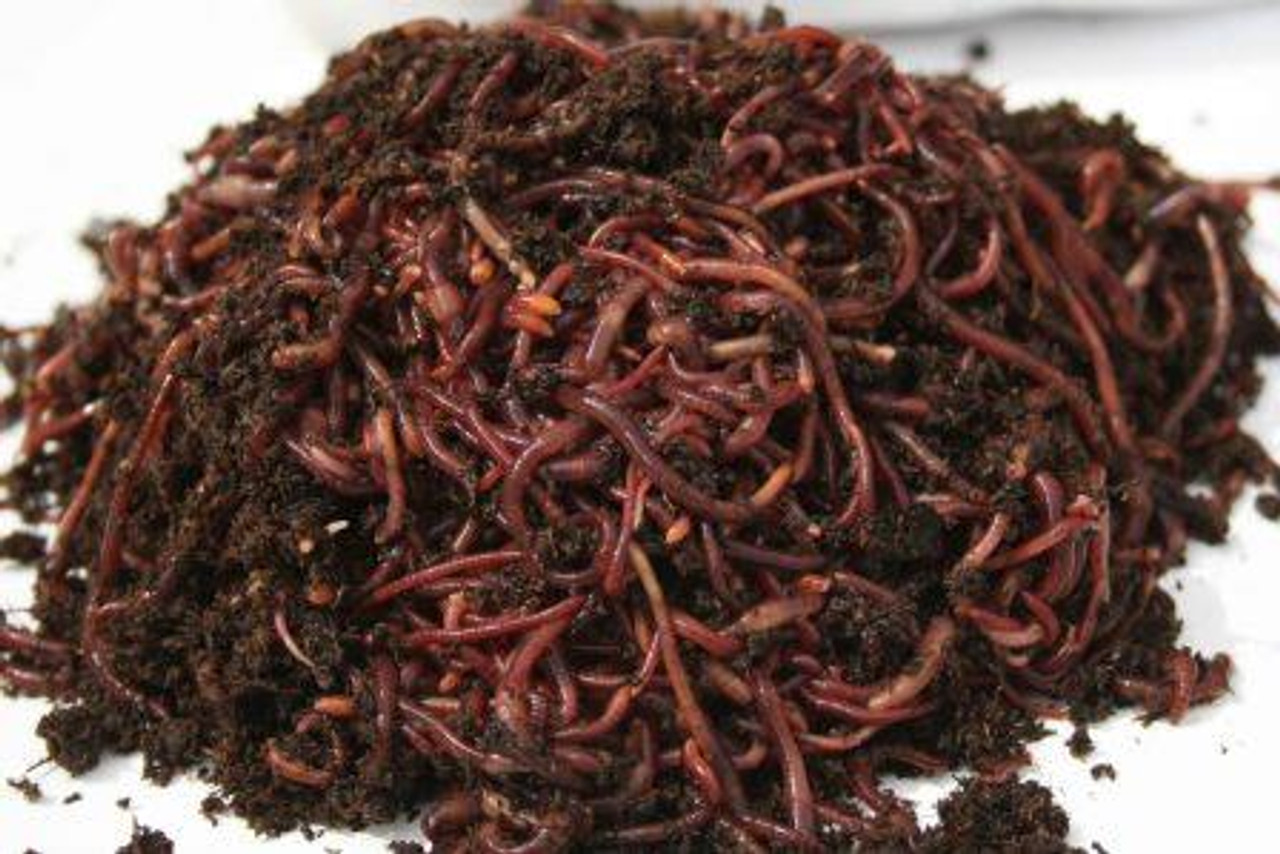Mastering Red Wiggler Composting: Essential Practices for Healthy And Balanced Composting
Mastering Red Wiggler Composting: Essential Practices for Healthy And Balanced Composting
Blog Article
Recognizing the Perks of Red Wiggler Composting: How This Reliable Method Transforms Organic Waste Into Nutrient-Rich Soil Changes
Red Wiggler composting, using the types Eisenia fetida, offers an engaging technique to natural waste monitoring, converting cooking area scraps and yard particles right into important soil amendments. This method not just improves soil fertility but likewise addresses pressing ecological worries, consisting of landfill waste reduction and greenhouse gas emissions.
What Are Red Wigglers?
Red wigglers, medically recognized as Eisenia fetida, are a varieties of earthworm that play a critical duty in vermicomposting systems. These worms are defined by their reddish-brown color, fractional bodies, and an unique ability to flourish in organic-rich settings, making them excellent for composting applications - Red Wiggler Composting. Unlike their garden-dwelling equivalents, red wigglers prefer to inhabit the top layers of dirt, where rotting matter is bountiful
Commonly measuring between 3 to 4 inches in size, red wigglers have a high reproductive price, enabling them to increase quickly under ideal conditions. They have an unique digestive system that allows them to process natural waste successfully, transforming it into nutrient-rich castings, which are highly beneficial for plant development.
Their tolerance to differing moisture degrees and temperature ranges even more boosts their utility in vermicomposting arrangements, making them a favored option among composting fanatics. In addition, red wigglers are cardio organisms, which requires a well-aerated composting atmosphere, making sure reliable decomposition. Understanding the biological traits and behaviors of red wigglers is necessary for optimizing their usage in lasting waste monitoring practices.

Advantages of Vermicomposting
Using the power of vermicomposting offers a plethora of environmental and farming advantages. Firstly, it significantly lowers organic waste in landfills, consequently minimizing methane emissions, a potent greenhouse gas. By diverting food scraps and lawn waste to vermicomposting, we support an even more lasting waste administration system.
Furthermore, vermicomposting enhances soil wellness. The castings produced by red wigglers are abundant in essential nutrients, microorganisms, and enzymes, improving dirt structure and fertility. This nutrient-rich amendment advertises robust plant growth and raises water retention, minimizing the demand for chemical plant foods.
Furthermore, vermicomposting fosters biodiversity in the dirt ecosystem. The intro of useful microorganisms from worm spreadings aids in condition reductions and nutrient cycling, creating a healthier setting for plants.
Financially, vermicomposting minimizes the expenses related to chemical inputs and garbage disposal. Farmers and garden enthusiasts can cultivate top notch fruit and vegetables at lower expenses, contributing to food security and sustainability.
How to Beginning Composting
Beginning a composting endeavor can be a satisfying and simple procedure. To begin, select a suitable location that is well-drained and receives partial sunlight. This will certainly assist keep a balanced temperature, vital for the composting procedure. Next off, pick a garden compost bin or create an assigned location in your yard, guaranteeing it is quickly obtainable for collecting and adding products garden compost.
Gather natural products such as cooking area scraps, lawn waste, and shredded paper. Objective for a well balanced mix of 'environment-friendly' materials, high in nitrogen (e.g., fruit scraps, coffee premises), and 'brown' products, abundant in carbon (e.g., dried fallen leaves, cardboard) A proportion of approximately 2:1 environment-friendly to brown materials is ideal.
Start layering your products, guaranteeing sufficient air flow by transforming the pile routinely. This promotes cardiovascular decay, speeding up and decreasing smells up the process. Screen moisture levels; the garden compost ought to seem like a wet sponge yet not excessively damp.
Nutrient Profile of Vermicompost
Composting, specifically with red wigglers, yields a nutrient-rich product referred to as vermicompost. This organic modification is distinguished by its high focus of vital nutrients, making it an important source for horticulture and agriculture. Vermicompost normally consists of elevated degrees of macronutrients such as phosphorus, potassium, and nitrogen, which are important for plant development. Furthermore, it offers trace elements like calcium, magnesium, and iron, promoting durable plant advancement and enhancing dirt wellness.
The microbial activity existing in vermicompost better enriches its profile, presenting beneficial germs and fungis that advertise nutrient availability and uptake in plants. This biological element help in subduing look at this now plant conditions and improving dirt framework, bring about improved water retention and aeration.

Environmental Effect of Composting
The ecological effect of composting, particularly through using red wigglers, is profound and complex. This approach substantially decreases the quantity of organic waste sent out to land fills, which consequently lessens greenhouse gas emissions, especially methane-- a potent factor to climate adjustment. By diverting organic products from garbage dumps, red wiggler composting not just helps discover this info here minimize ecological destruction yet additionally advertises lasting waste administration techniques.

Additionally, composting adds to carbon sequestration, as the process records carbon dioxide from go the ambience and shops it in the soil. This all-natural process aids in combating environment adjustment while improving the soil - Red Wiggler Composting. Overall, red wiggler composting provides a viable, green remedy for waste monitoring and ecological sustainability, promoting much healthier environments and a much more sustainable future
Conclusion
In conclusion, Red Wiggler composting offers as an effective approach for transforming organic waste into beneficial soil modifications. The procedure not just enhances dirt fertility and structure however also reduces environmental problems associated with waste disposal.
Red Wiggler composting, utilizing the varieties Eisenia fetida, offers a compelling technique to natural waste management, converting kitchen scraps and yard particles into important soil amendments. Unlike their garden-dwelling counterparts, red wigglers favor to live in the upper layers of dirt, where decomposing issue is abundant.
The castings produced by red wigglers are abundant in crucial nutrients, germs, and enzymes, enhancing dirt structure and fertility. The nutrient-rich byproducts of red wiggler activity boost soil structure, boost water retention, and promote biodiversity within the dirt community.In final thought, Red Wiggler composting offers as an efficient approach for transforming natural waste into beneficial soil changes.
Report this page